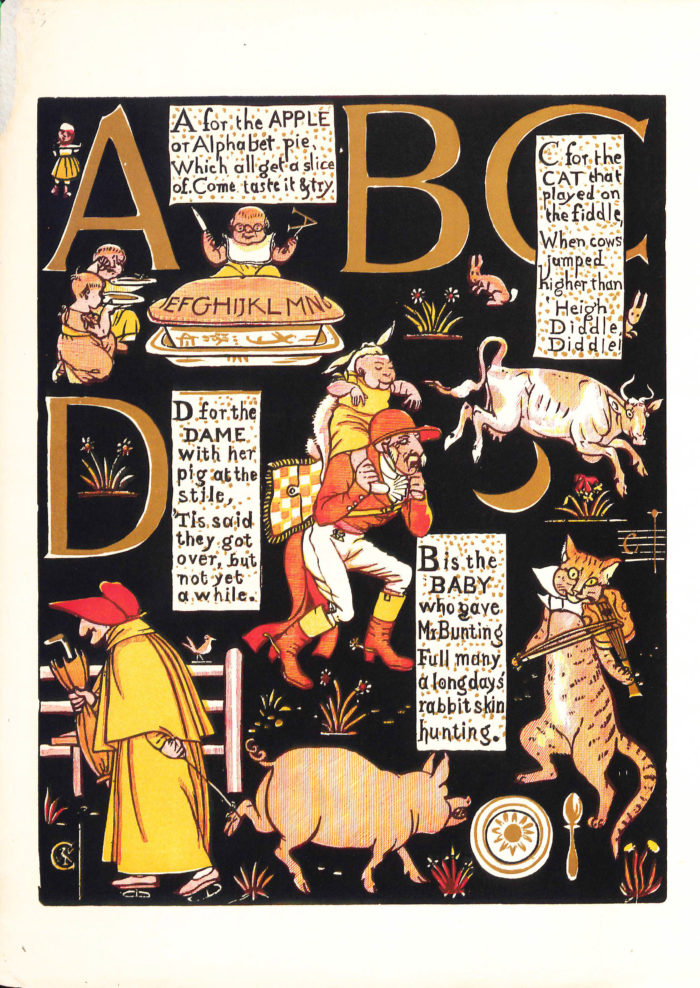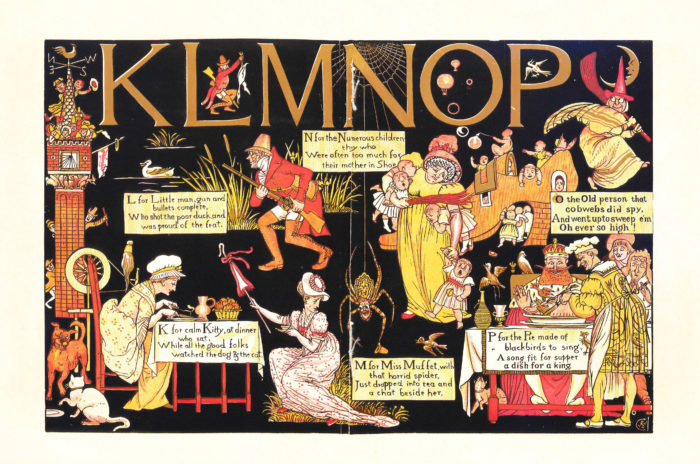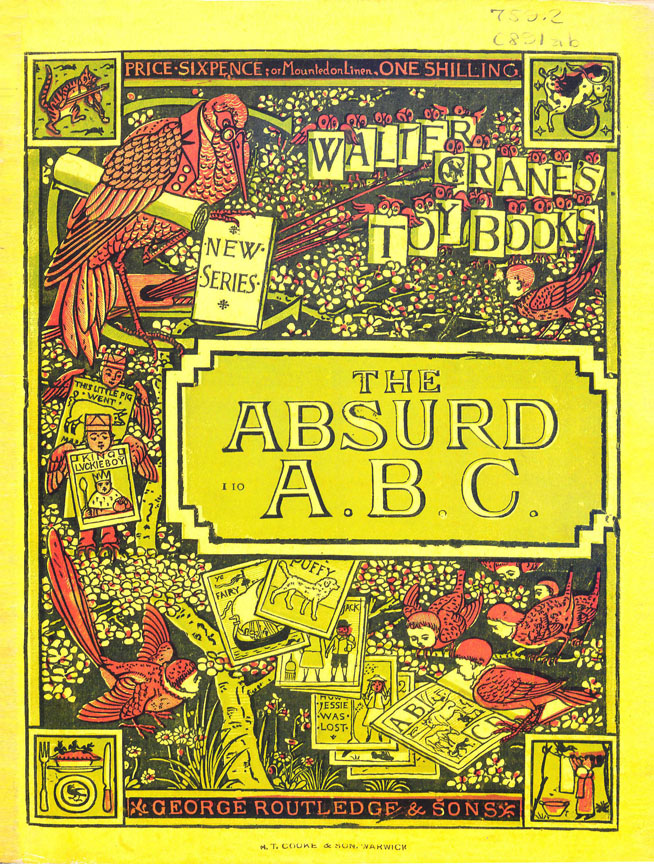One of the most creative periods in the history of children’s books took place in the second half of the nineteenth century. “Father of the illustrated children’s book”, Walter Crane, (1845-1915) was not only one of the most prolific illustrators in the Victorian era, but was also an artist and decorative designer in the fields of wallpaper, glass, ceramics, textile and interior design that still influences designers today. The subjects of many of Walter Crane’s books were nursery rhymes and fairy tales, and among his finest and most popular works were his primers and alphabet books. The Absurd A.B.C. was published in 1874, a time when Crane was at the very top of his form. In the preface to these books, Bryan Holme wrote that, “there could be no better way of learning one’s ABCs than through either of these books.”
The year 1863 was a vital turning point in Crane’s career, when he was introduced to Edmund Evans (1826–1905), a prominent English wood engraver and color printer, who was able to print a wide range of color schemes and popularize the production of illustrated children’s books. Evans employed Crane to illustrate covers for the publisher Frederick Warne & Co., in the yellow-bound Sixpenny Toybook Series. After 1866, Crane designed for publisher George Routledge & Sons’ Aunt Mavor’s Picture Books (later known as the Sixpenny Toy Series) and Shilling Series (later called Walter Crane’s Toy Books).
The Absurd A.B.C. features entertaining verses along with colorful illustrations. Crane’s designs were based on his observations of young children; he believed that good illustrations would stimulate children’s interest in reading books and help them to learn. Crane thus illustrated a set of English nursery rhymes along with comic touches, like the cow jumping over the moon and the cat playing the fiddle in the page with letters A, B and C. Most of his illustrations proposed that young children love seeing most things in profile and bright frank colors. He also suggested that children are not concerned with three dimensions, so his illustrations appeared as flattened representations, with figures as silhouettes with no organized spatial scheme.

Cooper-Hewitt’s Rare Books Collection holds many books written or illustrated by Crane, including children’s books such as Beauty and the Beast, The Frog Prince, The Yellow Dwarf, and The Sleeping Beauty. The Absurd ABC was part of a gift of children’s books given by Miss Elizabeth Kean in 1924 to the Hewitt Sisters and the Cooper Union Museum library. The Absurd A.B.C. was in very fragile condition, needing repair and a sturdy enclosure. Fortunately, this book and other Walter Crane’s books received preservation treatment and a new enclosure with the support of a Smithsonian Women’s Committee Grant in 2015.

Weixin Jin is a graduate student in the Design History and Curatorial Studies program at Parsons / Cooper Hewitt and works in the Smithsonian Design Library. Jin is a researcher in the fields of Decorative Design and Museum Studies, and a lead author of Design Museum that was published in 2014.
